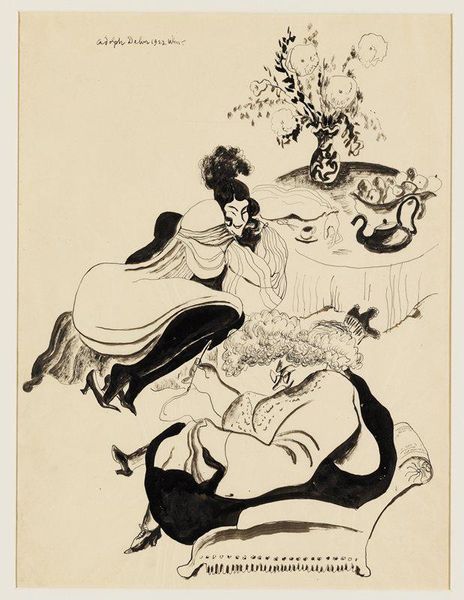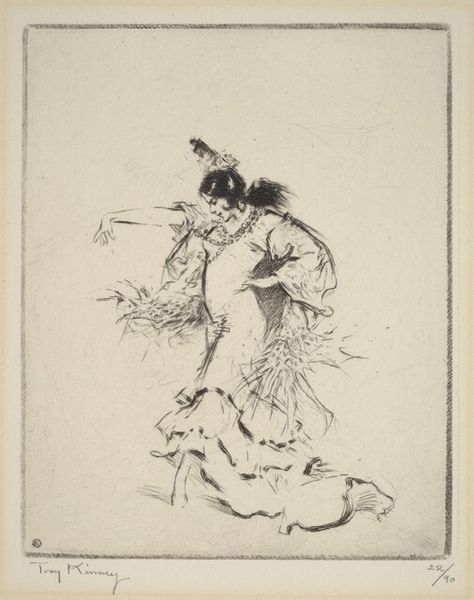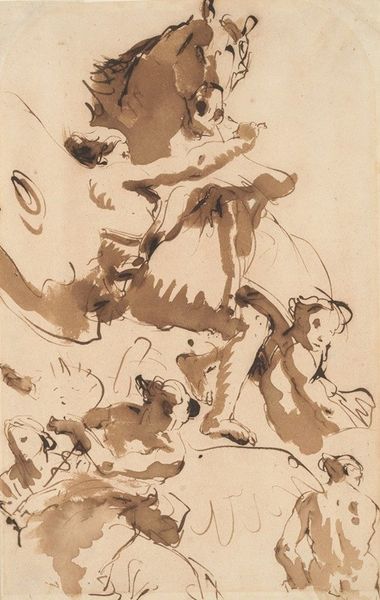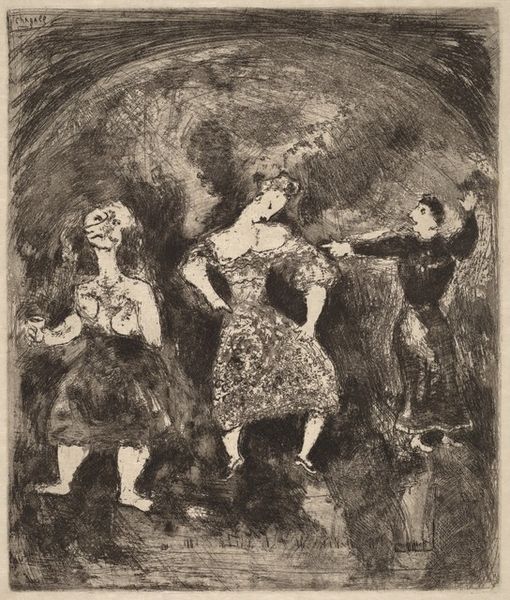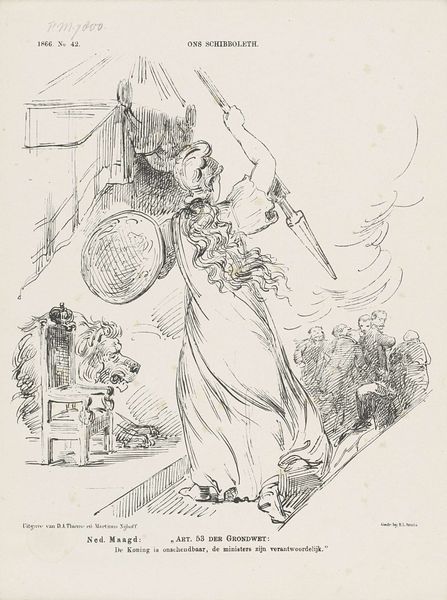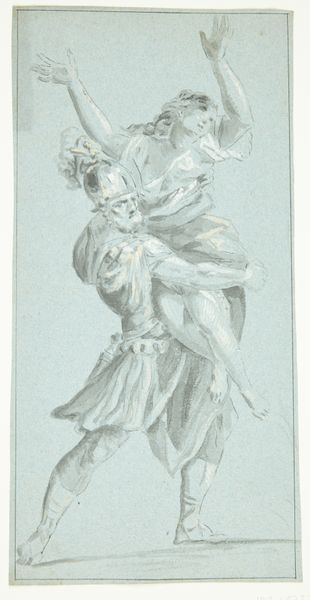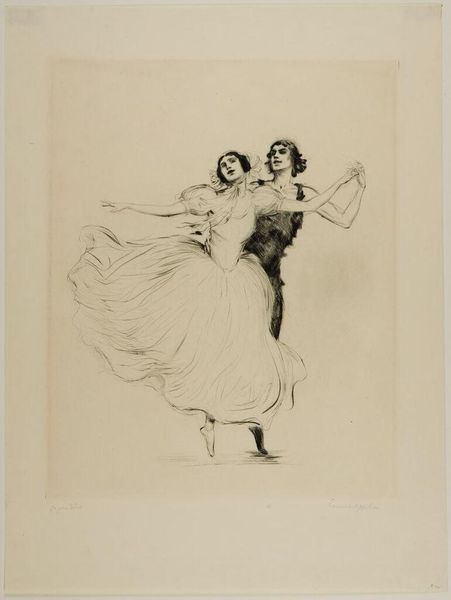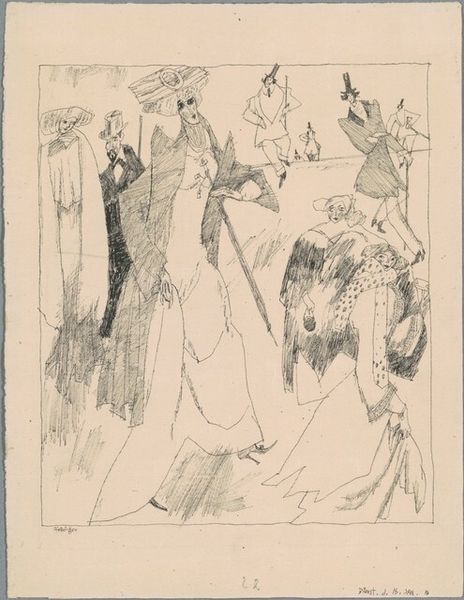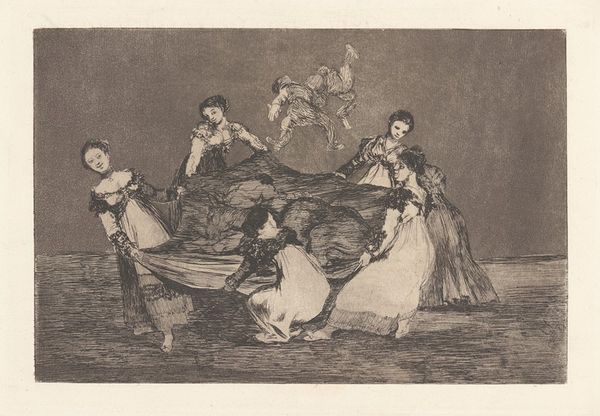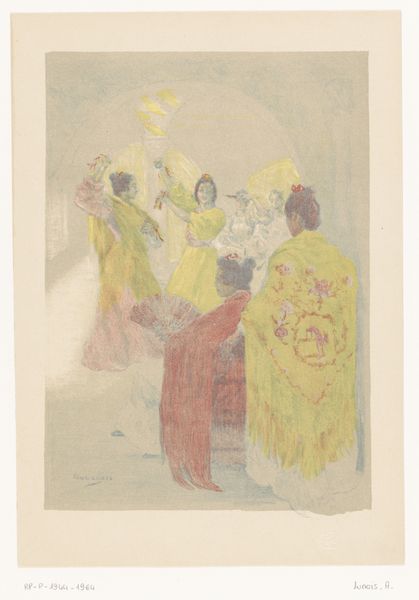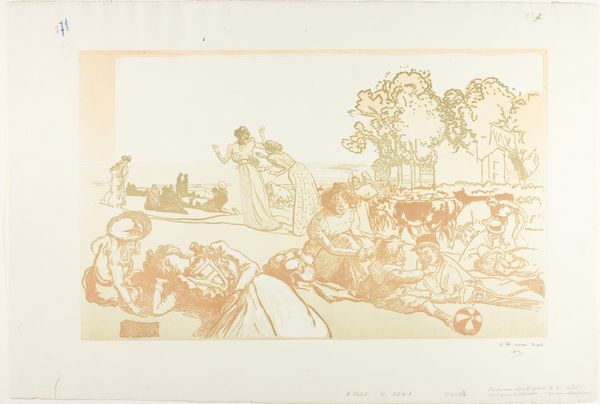
#
art-nouveau
# print
#
impressionism
#
figuration
#
genre-painting
#
erotic-art
Dimensions: overall: 30.2 x 43.9 cm (11 7/8 x 17 5/16 in.)
Copyright: National Gallery of Art: CC0 1.0
Jules Chéret made this lithograph, Waltz of the Blonde and Waltz of the Brunette, using a stone matrix and greasy crayons, typical of the printmaking boom of late 19th-century France. Chéret was a master of lithographic advertising, and this print showcases the era's fascination with entertainment, particularly the allure of dance. The lithographic process allowed for the mass production of vibrant posters and prints, making art accessible to a wider audience and fueling a culture of consumerism. The texture and tone achieved through lithography lend a softness to the image, evoking the romantic atmosphere of a waltz. The process requires skill in drawing, and the ability to transfer that drawing to stone, using the chemical reaction between grease and water to create an image. It’s a labor-intensive process that sits at the intersection of art, craft, and industry. Consider how the materials and making shaped the work’s cultural impact, blurring boundaries between high art and popular culture.
Comments
No comments
Be the first to comment and join the conversation on the ultimate creative platform.
